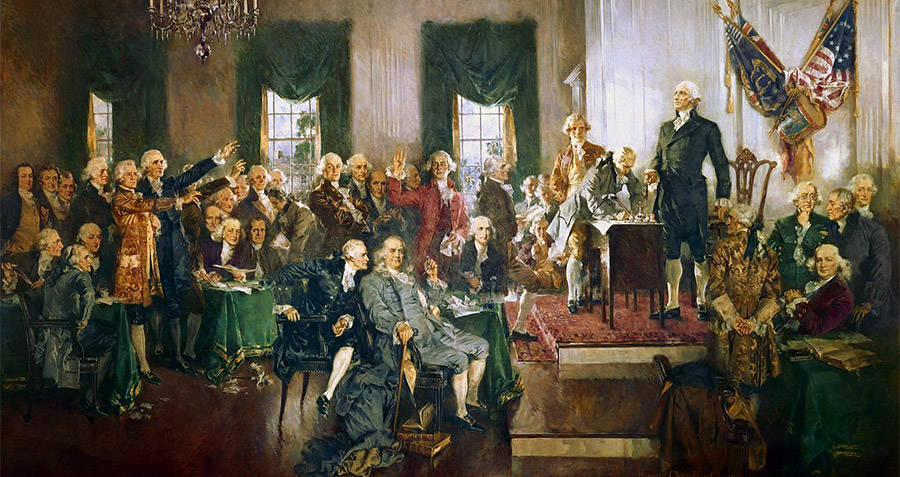Christianity In The United States of America
Christianity is the largest and most prevalent religion in the United States of America. A 2021 survey suggests that over 63% (210 million) of the entire U.S. population (332 million) are Christians.
About 42% (140 million) of Christian Americans are Protestant Christians, 21% (70 million) Roman Catholics; then, other Christian denominations such as The Church of Jesus Christ of Latter-day Saints, Eastern Orthodox Christians and Oriental Orthodox Christians, and Jehovah’s Witnesses, make up 4% of the American Christian population.
The United States has the largest Christian population in the world and, more specifically, the largest Protestant population in the world, with nearly 210 million Christians. The Public Religion Research Institute‘s “2020 Census of American Religion”, carried out between 2014 and 2020, showed that 70% of Americans identified as Christian during this seven-year interval.
A 2020 survey by the Pew Research Center, shows that 65% of adults in the United States identified themselves as Christians. About 62% of those polled claim to be members of a church congregation.
History of Christianity In America
The history of Christianity in America is a rich tapestry woven with diverse threads from various traditions, denominations, and cultural influences.
History Of Christianity In Africa
Christianity was introduced in the United States of America during the period of European colonization. The Spanish and French brought Catholicism to the colonies of New Spain and New France respectively, while British and Germans introduced Protestantism. Among Protestants, adherents to Anglicanism, the Baptist Church, Calvinism, Congregationalism, Presbyterianism, Lutheranism, Quakerism, Anabaptism, Methodism, and Moravian Church were the first to settle in the American colonies.
Here’s a chronological overview of the History of Christianity in America:
- Colonial Era (17th-18th centuries): Christianity arrived in America with the early European settlers. The first successful English colony, Jamestown (founded in 1607), had Anglican roots. The Pilgrims, who settled in Plymouth, Massachusetts, in 1620, sought religious freedom from the Church of England. Other colonies, such as Massachusetts Bay Colony, were established by Puritans seeking to create religiously devout communities.
- Great Awakening (18th century): The 18th century saw a series of religious revivals known as the Great Awakening. These revivals, characterized by emotional preaching and calls for personal conversion, swept through the colonies and helped shape American religious identity. Prominent figures like Jonathan Edwards and George Whitefield were key leaders of this movement.
- Denominational Expansion: As the American colonies grew, so did the diversity of Christian denominations. Alongside Anglicans and Puritans, groups like Baptists, Methodists, Presbyterians, and Quakers gained prominence. Each brought its own theological perspectives and organizational structures.
- Westward Expansion (19th century): As the United States expanded westward, so did Christianity. Missionaries played a significant role in spreading Christianity among Native American populations, while settlers established churches and religious communities across the frontier. This period also saw the rise of new religious movements, such as Mormonism, founded by Joseph Smith in the early 19th century.
- Civil War and Reconstruction (19th century): The Civil War era was marked by divisions within American Christianity over issues like slavery and states’ rights. While some Christian leaders defended slavery, others, particularly in the North, supported abolitionism. After the Civil War, churches played a role in the process of Reconstruction, as well as in the struggle for civil rights for African Americans.
- Industrialization and Urbanization (late 19th-early 20th centuries): The late 19th and early 20th centuries witnessed significant social and economic changes in America, including industrialization and urbanization. These changes influenced the practice of Christianity, leading to the growth of urban churches and the rise of social gospel movements that emphasized addressing social injustices.
- Fundamentalism and Modernism (early 20th century): The early 20th century saw debates within American Christianity between fundamentalists, who sought to defend traditional Christian beliefs against modernist challenges, and modernists, who embraced new approaches to theology and biblical interpretation. This tension culminated in the Scopes Trial of 1925, which focused on the teaching of evolution in schools.
- Post-World War II Era: The post-World War II era witnessed a resurgence of religious activity in America, with the rise of evangelicalism and charismatic Christianity. Evangelical leaders like Billy Graham gained national prominence, while charismatic movements emphasized the experience of the Holy Spirit and spiritual gifts.
- Contemporary Christianity: Today, Christianity remains the largest religious tradition in the United States, with a diverse array of denominations and expressions. Mainline Protestant denominations have seen declining membership, while evangelical and charismatic movements continue to grow. Additionally, Catholicism remains a significant presence, particularly among immigrant communities.
Throughout its history, Christianity in America has adapted to changing cultural, social, and political contexts while remaining a central aspect of American life for many.
Last modified: May 8, 2024






